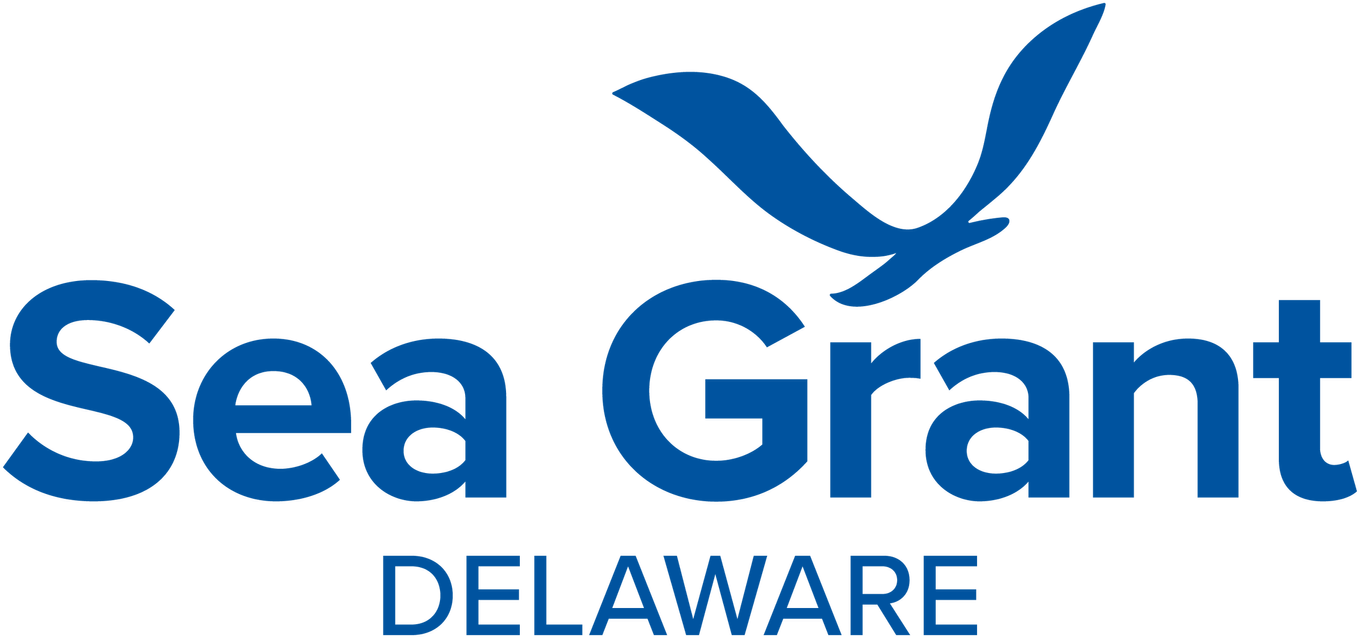

Year in Review
2024
Learn more about many of Delaware Sea Grant's proudest achievements from the past year, including our work with partners from across the state and collective efforts to make a difference in the lives of Delawareans.
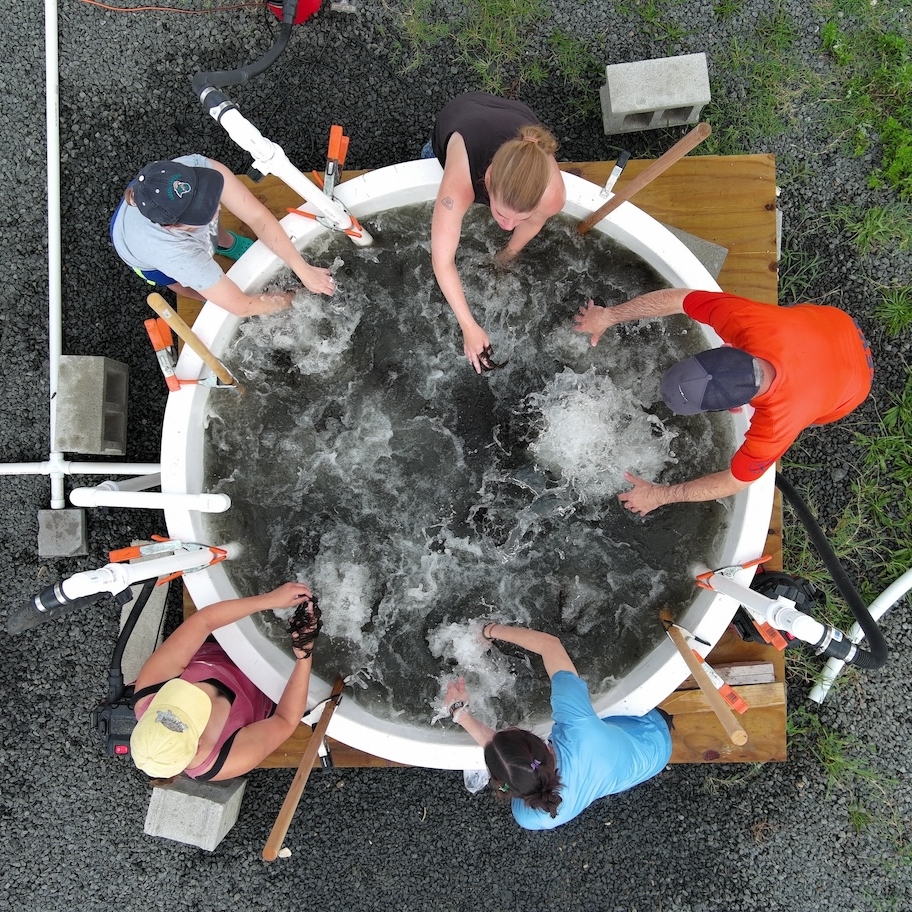
SUPPORT FOR DELAWARE SEA GRANT
Delaware Sea Grant plays a vital role in advancing coastal science, supporting local communities, and promoting sustainable economic development throughout our state and region.
From protecting our coastlines and improving water quality to supporting the seafood industry and training the next generation of marine scientists, Delaware Sea Grant's work has a direct and meaningful impact. Continued federal funding is essential to maintaining these efforts and expanding our reach.
Your voice is needed! Add your name to a sign-on letter urging Congress to maintain strong support for Delaware Sea Grant. By signing the letter of support, you’ll help ensure that Delaware remains a leader in coastal research, resilience and innovation.
BY THE NUMBERS
$33 MILLION+
in economic impacts
The work of Delaware Sea Grant was responsible for more than $33 million in economic impacts in 2023 and 2024, including $17 million in 2023 and an additional $16 million in 2024. This represents a 7-to-1 return on federal, state, and University funding received. These figures were calculated based on economic valuation best practices and resulted from quantifying real world impacts in terms of increased revenue to businesses and organizations in Delaware, higher earnings for workers from jobs and skills training provided by Delaware Sea Grant, and cost savings for residents and businesses resulting from an improved ability to withstand severe weather.
6.2 tons of household trash
were collected by DESG in partnership with the Collins Park Civic Association during their 5th Annual Community Cleanup, the equivalent of four 30-yard dumpsters.
687+ students
engaged with DESG's marine science and environmental education programming, with nearly 200 involved in career awareness as part of their program.
130+ crab traps checked and 100+ derelict crab pots removed
from Delaware’s Inland Bays thanks to efforts from DESG and volunteers.
1 million+ seed oysters
were produced in DESG's pilot oyster hatchery during the 2024 growing season. An additional 35,000 seed were produced using larvae that the hatchery produced in-house.
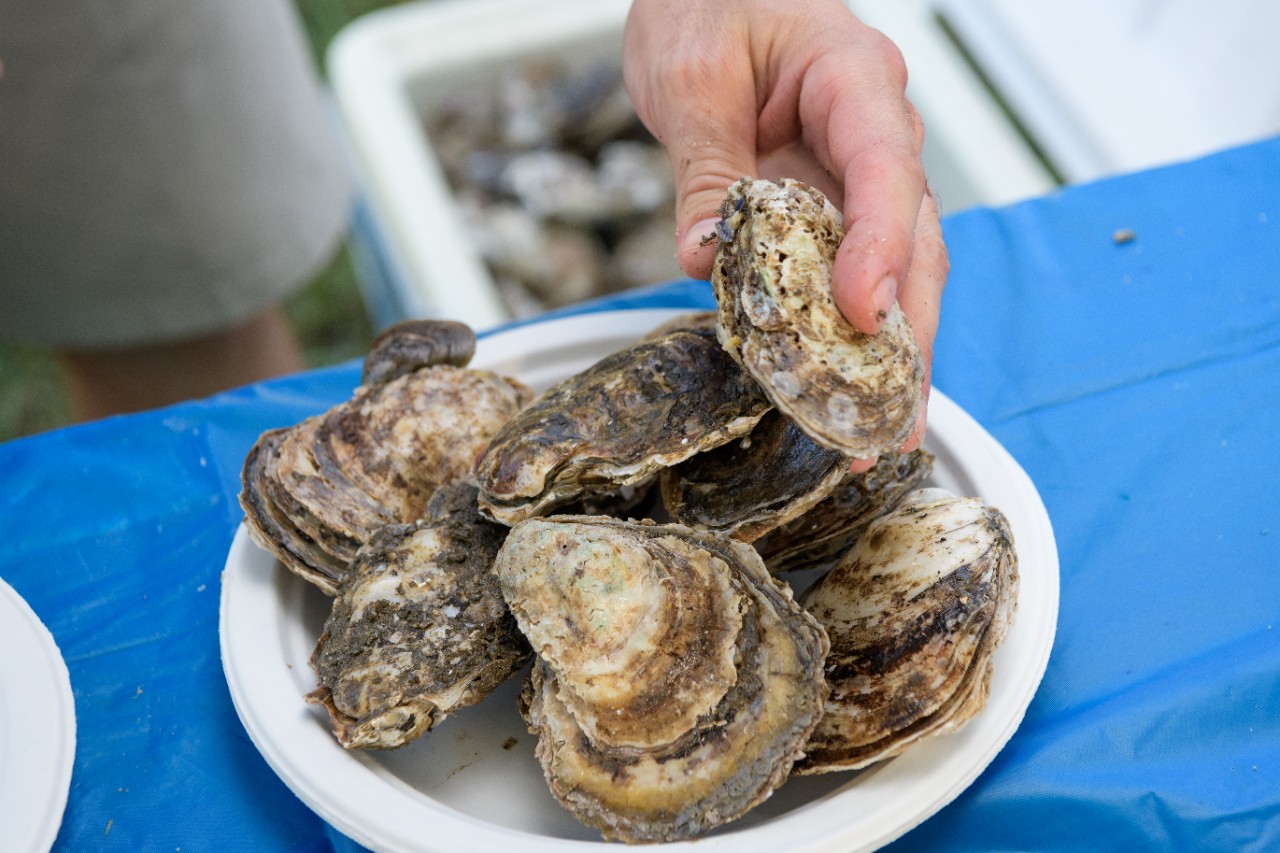
Oyster farmers in Delaware often lack access to larval and seed oysters. To help address this issue, Delaware Sea Grant’s pilot oyster hatchery—the first of its kind in the state—successfully produced 1,035,000 seed oysters during the 2024 growing season. More than 600,000 seed oysters were distributed to state shellfish growers in Rehoboth Bay, and more than 400,000 spat on shell were distributed to growers in the Delaware Bay, helping to enhance the economic value of the state’s shellfish industry.
Delaware Sea Grant staff also pursue applied fisheries and aquaculture research in topics like fish tagging methods, sonar data, artificial structure impacts on local aquatic communities, and national trends in recreational fisheries.
RESEARCH HIGHLIGHT
PFAS in the Delaware Bay
Delaware Sea Grant-funded researchers are assessing human exposure to PFAS that may occur through consumption of Delaware Bay seafood. The research is focused on consumption of self-caught recreationally important fish and will inform strategies for mitigating PFAS exposures through the development of fish consumption advisories and maximum contaminant levels.
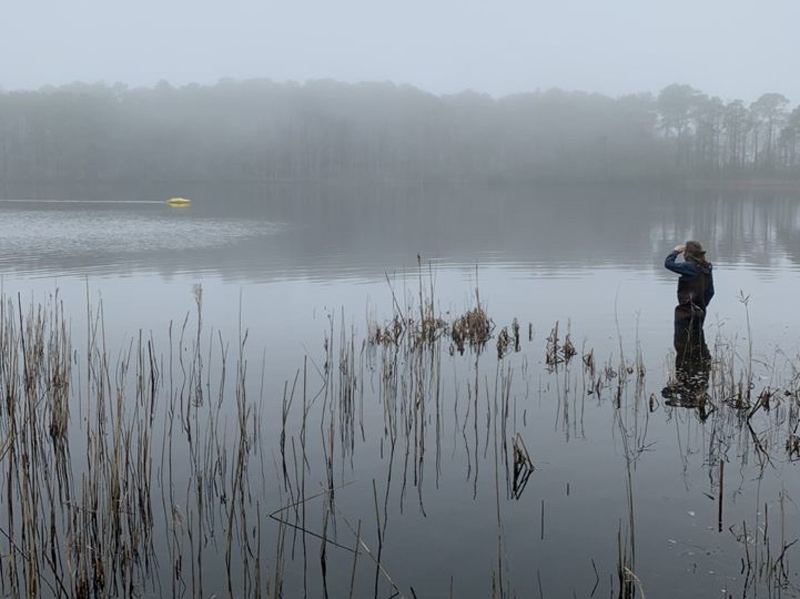
To fill gaps in statewide emergency preparedness, state agencies and local officials turn to Delaware Sea Grant for technical advice and information to guide resilience planning and policies. In 2024, Delaware Sea Grant led evacuation planning workshops in Kent and New Castle Counties to teach new evacuation protocols based on Delaware’s evacuation zones. Forty municipal and county officials attended, representing more than 750,000 residents across the state. Other emergency preparedness activities included a flood insurance forum, realtor training on severe weather and green infrastructure, aging in place seminars, and a weekly news column about beach hazards.
Delaware Sea Grant’s Sustainable Coastal Communities Initiative continued to address significant challenges faced by coastal communities. This was done, in part, by leading the Coastal Resilience Design Studio’s creation of a community resilience plan for Milton and the implementation of design treatments and recommendations in Little Creek, Bowers Beach, and Slaughter Beach. In partnership with the Laurel Redevelopment Corporation, Delaware Sea Grant also hosted workshops on affordable housing and collaborated on the construction of 32 residential units in downtown Laurel, an important milestone in the redevelopment of the Broad Creek waterfront.
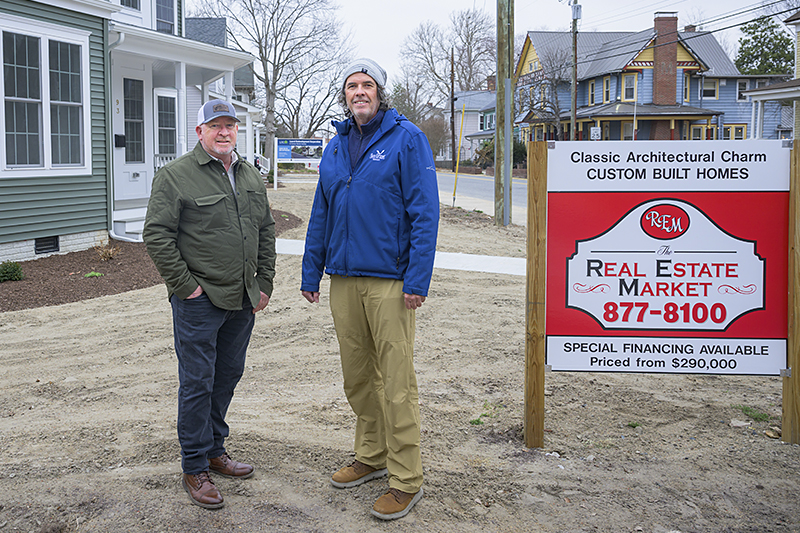
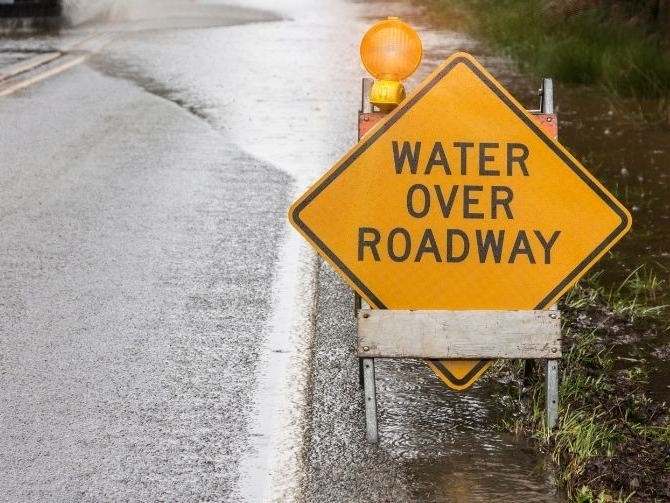
RESEARCH HIGHLIGHT
Stormwater flooding in Wilmington
Delaware Sea Grant-funded researchers are studying the potential for green stormwater infrastructure in the City of Wilmington to address flooding, improve stormwater management, and provide social and economic co-benefits. The research is using interviews, surveys, and participatory mapping in combination with hydrologic modeling to identify types and locations of green infrastructure that can advance the Resilient Wilmington initiative.
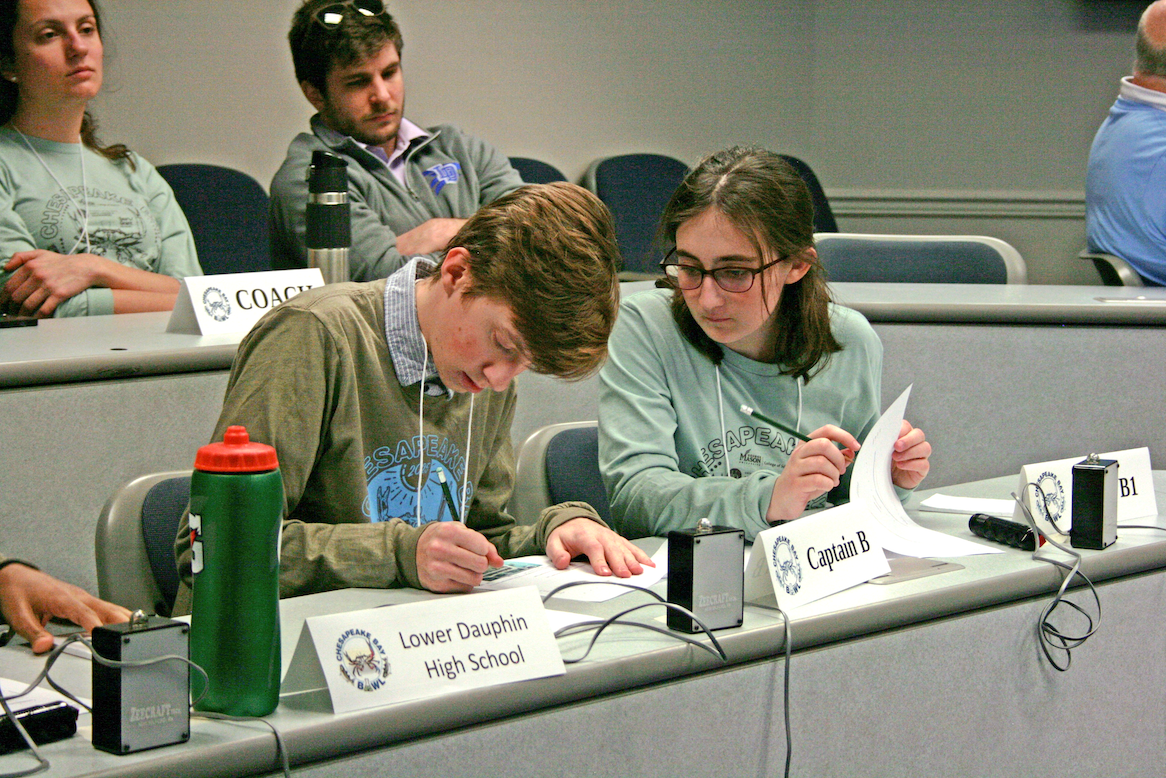
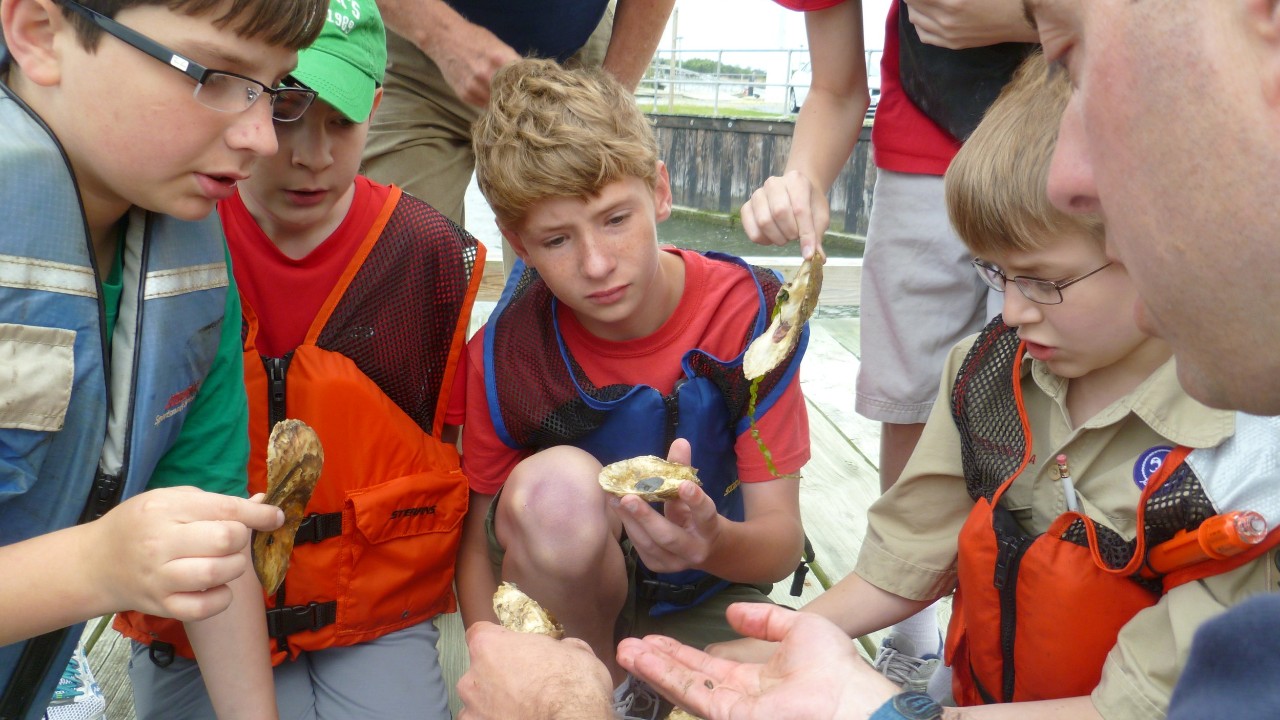
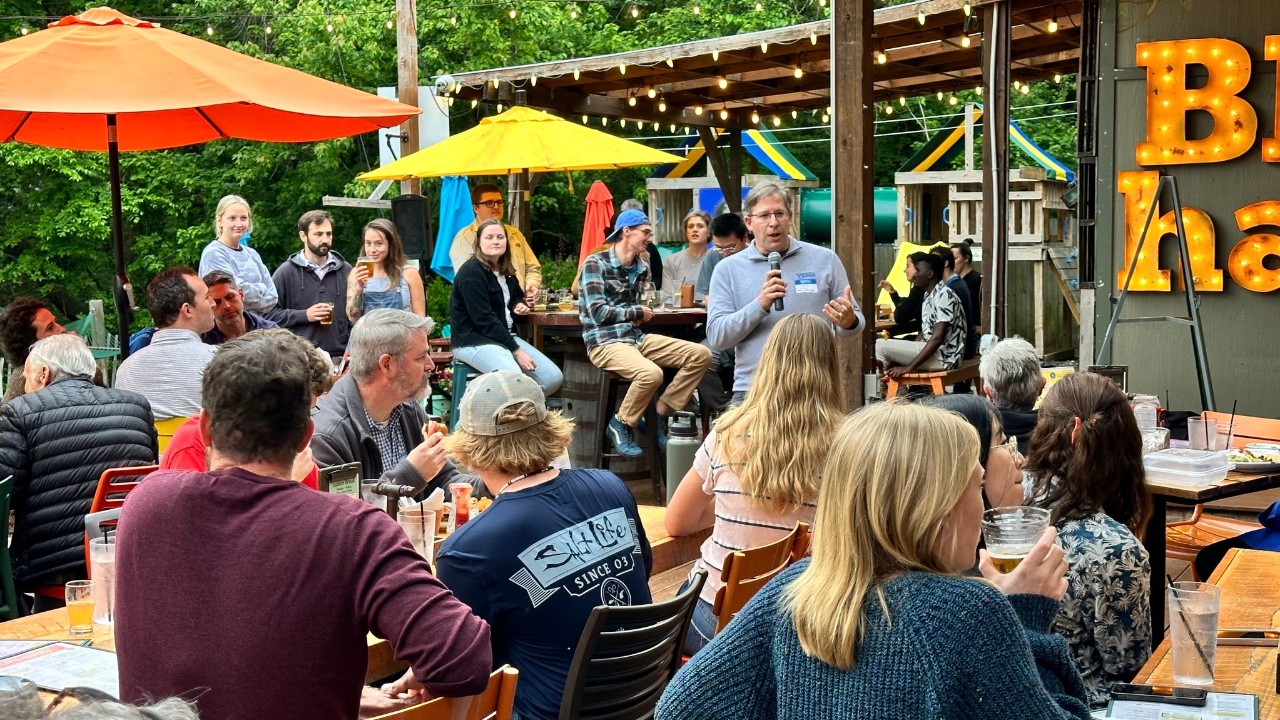
More than 687 students participated in Delaware Sea Grant’s marine science and environmental education programming in 2024, and 151 educators were provided with marine environmental science professional development. This year, the 25th Chesapeake Bay Bowl—an academic competition that engages high school students in ocean science trivia—was hosted by Delaware Sea Grant at the University of Delaware’s Lewes campus. Held in person for the first time since 2020, the event welcomed eight teams of students from Delaware, Pennsylvania, and Virginia.
Designed to help scouts meet the requirements for an oceanography merit badge, Delaware Sea Grant offers a field experience, classroom presentation, and lab tour as part of a longrunning course that shifted to virtual in 2020. Offered in person again in 2024, the course enrolled 38 scouts from across Delmarva.
Delaware Sea Grant also expanded environmental outreach through the popular “Scientist Walks Into A Bar” event series, meeting Sussex County communities in local restaurants for a casual introduction to marine scientists and providing scientific information on a broad range of topics pertaining to Delaware’s coast.
RESEARCH HIGHLIGHT
Healthcare access during severe weather
Delaware Sea Grant-funded researchers are working to improve access to healthcare facilities during severe weather. Research is using geospatial analysis and complex network modeling to identify communities and facilities that are at direct risk of flooding and indirect risk of isolation through roadway closure during storm events. Work is focused on impacts to those that require routine care due to chronic health conditions.
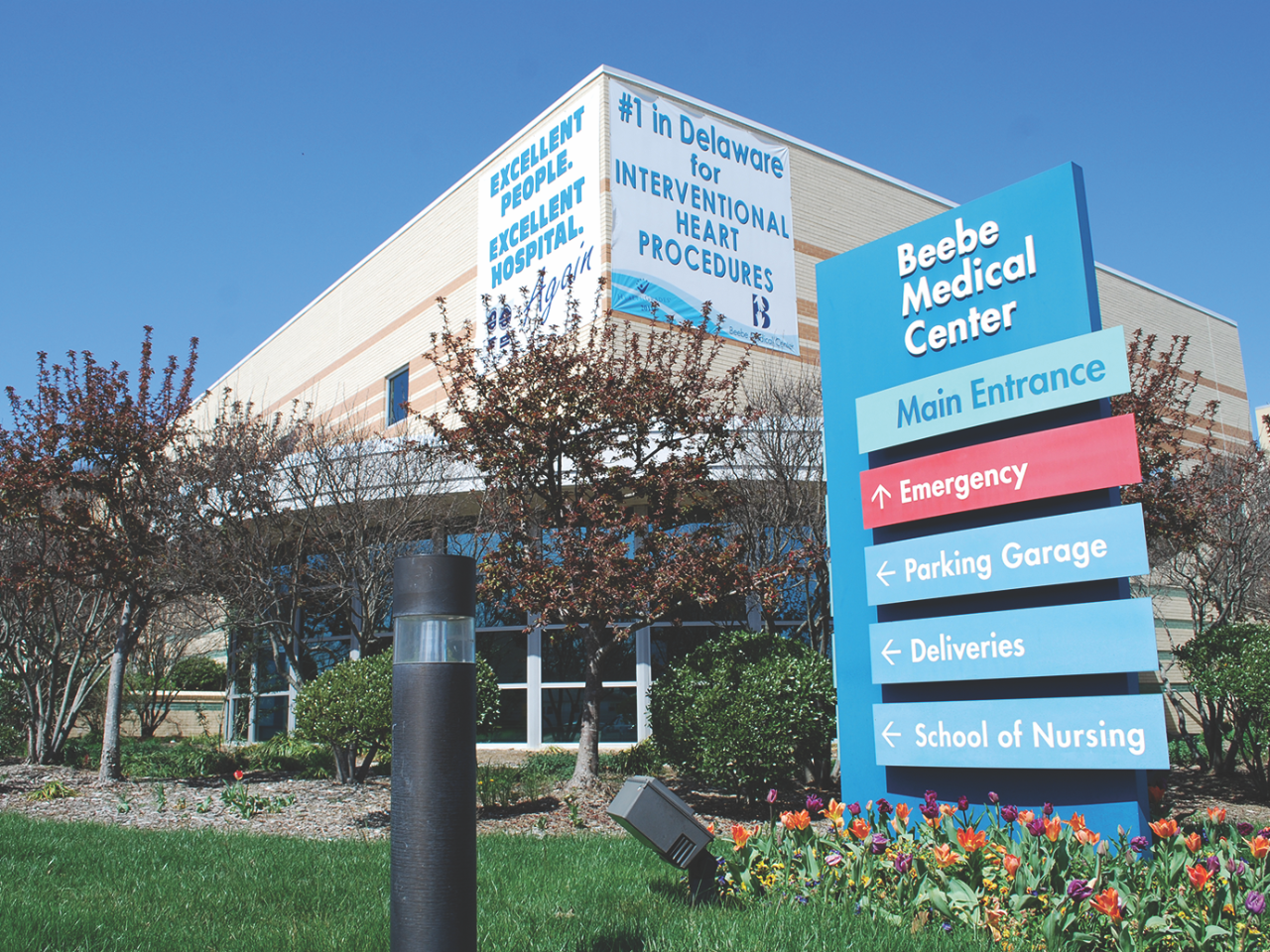
Abandoned in Delaware’s Inland Bays, derelict crab pots pose a danger to boats, harm marine animals and hurt the environment. To raise awareness of this marine debris, Delaware Sea Grant hosted six crab trap check events, a side scan sonar training to teach volunteers to locate the pots, and a removal event in Rehoboth Bay. These events reached 140 recreational crabbers, and Delaware Sea Grant helped check and rig 135 traps to meet state requirements, ensuring that cull rings are properly installed to reduce negative impacts to blue crab populations. At the removal event, 110 derelict crab pots were recovered.
Other Delaware Sea Grant efforts to protect coastal ecosystems include the collection of two million widgeon grass seeds for use in restoration projects, the creation of an educational website, delawaresav.org, to aid in public education about sea grasses, and a freshwater mussel gardening pilot project.
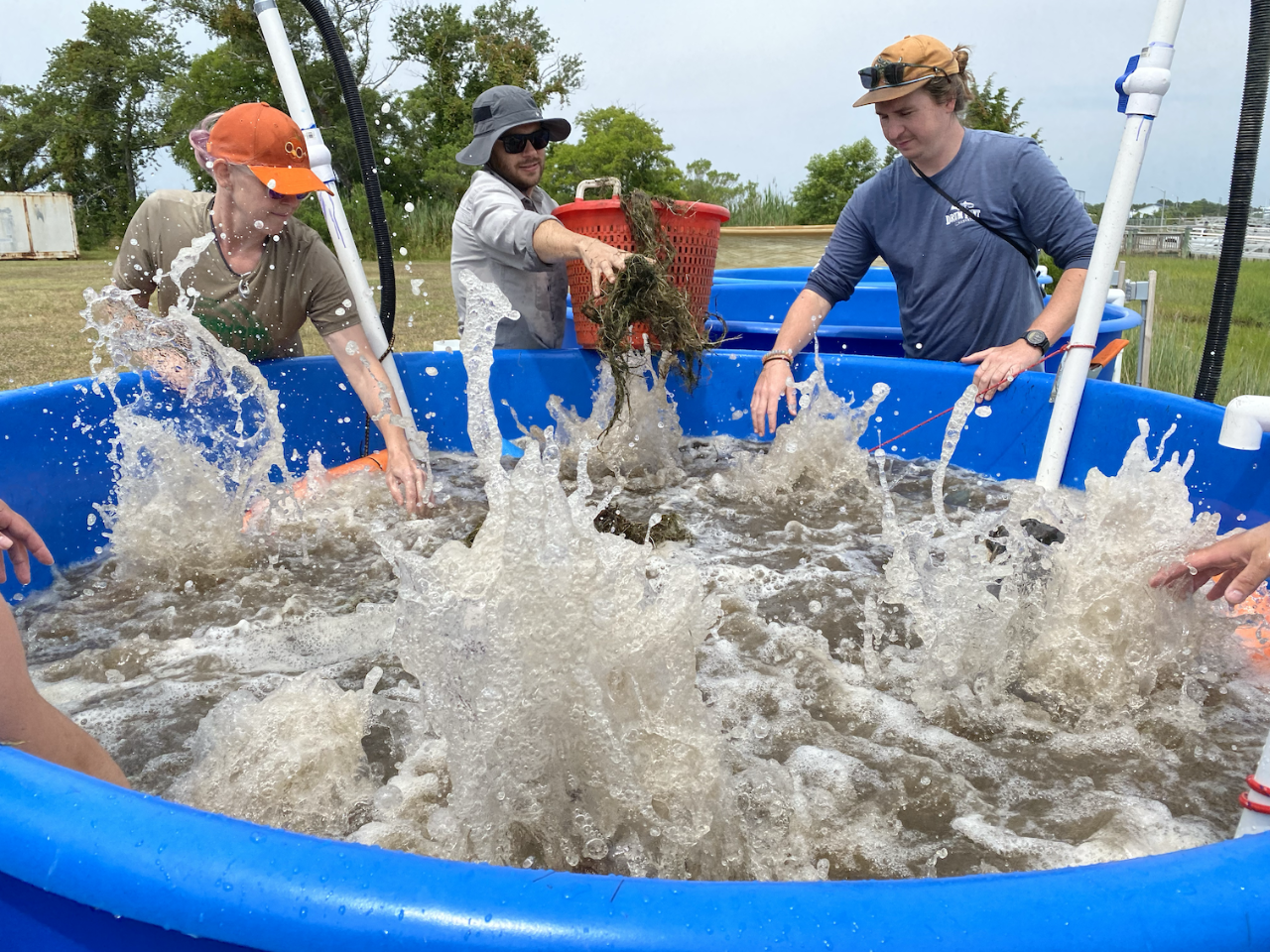
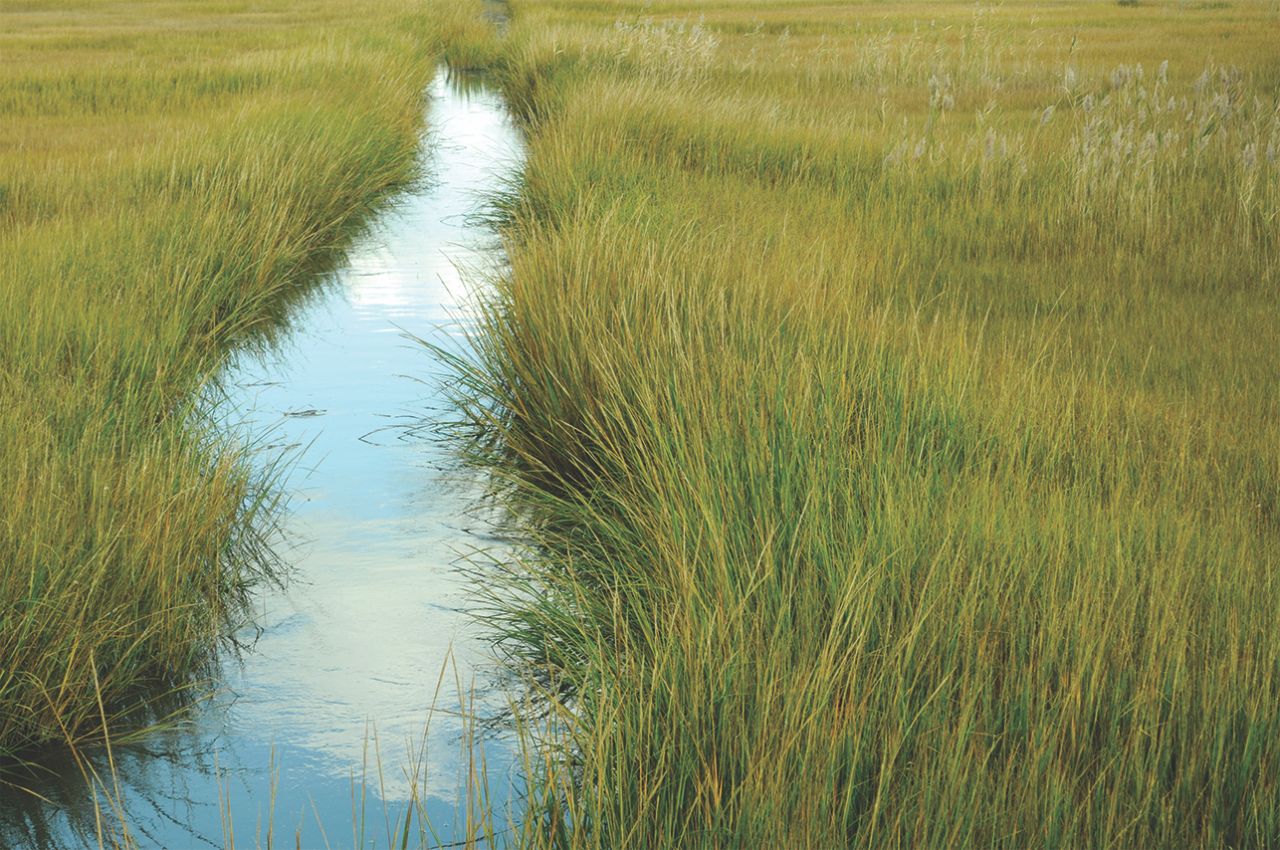
RESEARCH HIGHLIGHT
Improving mosquito control
In partnership with the Delaware Department of Natural Resources and Environmental Control, Delaware Sea Grant-funded researchers are working to improve mosquito control in coastal Delaware. Research is focused on understanding shifts in mosquito populations and surveillance for infectious diseases to protect the environment, public health, and the coastal economy.
The amazing Eastern Oyster
The Amazing Eastern Oyster: Aquaculture, Biology and Ecology: youtube.com/watch?v=FAbiX0IRHVM
Dr. Ed Hale discusses the Eastern Oyster, research efforts on how aquaculture could enhance shoreline resilience, and how UD's hatchery enhances the shellfish industry in Delaware.
Crab pot quest
Crab Pot Quest: youtube.com/watch?v=-x3Jh7Oa8CA
Interested in helping to clean up Delaware's Inland Bays? Learn how to use side-scan sonar in part one of this three-part video tutorial. Watch the full series here.

